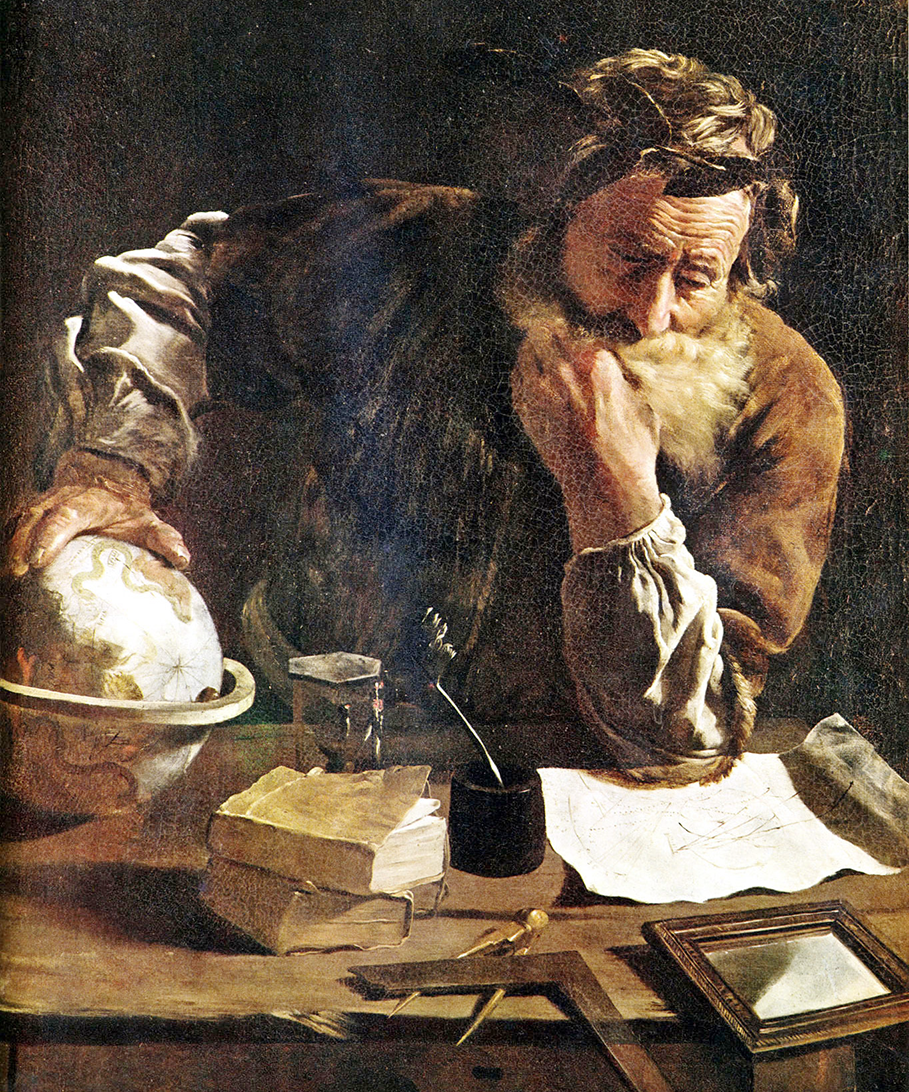“Eureka, eureka; I’ve found it!” cried Archimedes, while running around naked in the streets of Syracuse. The ancient Sicilians didn’t mind; they were used to turning a blind eye to naked lunatics. Archimedes rushed back home, grabbed something to write with, and got to work—or, rather, continued working. According to the Roman author Vitruvius, Archimedes was tasked by King Hiero II to find out whether his newly made crown was truly crafted of solid gold, without damaging the crown itself. Every time Archimedes pondered a difficult problem, he took a bath, and this time he noticed that the level of water in the tub rose as he got in. Could the submerged crown displace an amount of water equal to its volume? Eureka!
The “Eureka!” story reached its legendary status in modern retellings. Strangely enough, there is no mention of a golden crown in Archimedes’ treatise On Floating Bodies. We’ll never know whether it is true. What is true, however, is that the same king, Hiero II, commissioned Archimedes (figure 7.1) to build a gigantic ship, a ship capable of carrying more than 600 people, a gymnasium, and multiple temples. It truly was the Titanic of the ancient Greeks.
